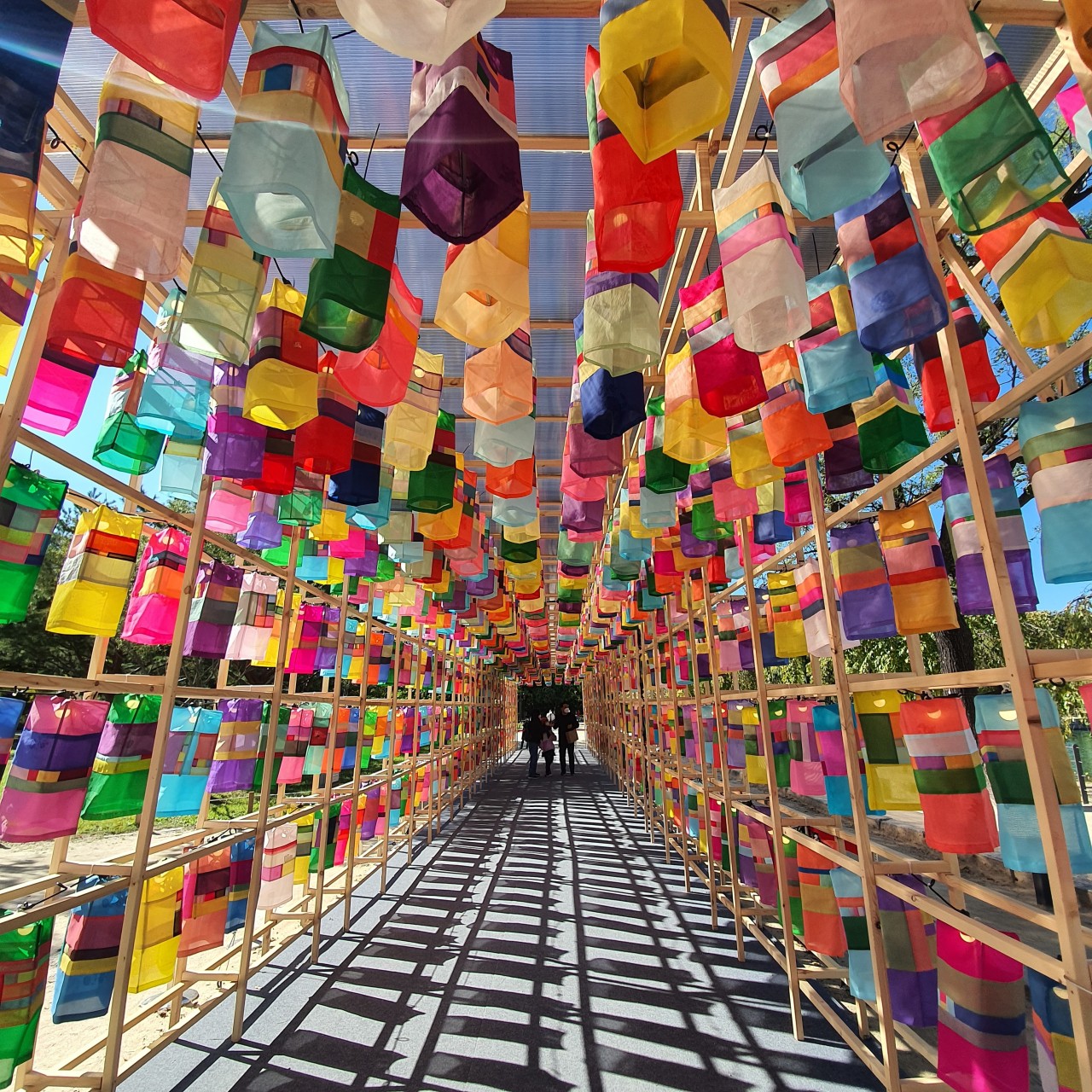
A tunnel in front of Gyeonghoeru Pavilion at Gyeongbokgung in Seoul has 1,500 colorful lanterns on display. They are made with silk from Jinju, South Gyeongsang Province. (Royal Culture Festival)
For those who were disappointed by the cancellation of regional festivals amid COVID-19, this weekend will be a great opportunity to experience South Korea’s regional specialties while walking through Seoul’s Gyeongbokgung.
As part of the Royal Culture Festival, an exhibition consisting of seven special zones on the palace grounds showcases products from different regions of the country. Visitors can take Instagramable photos while enjoying 2,142 art pieces from 27 teams of artists. The exhibition runs through Sunday.
“It is as we have brought regional festivals to the palace in Seoul,” Yoo Gwan-sook, the exhibition director, said.
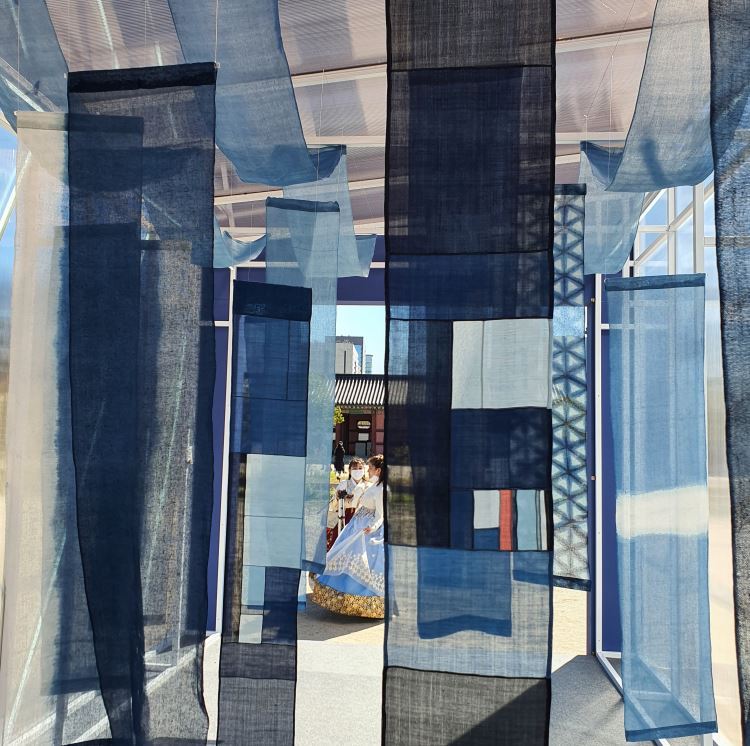
Naturally dyed fabrics from Naju, South Jeolla Province, are exhibited near Geunjeongmun, the palace gate at Gyeongbokgung in Seoul. (Royal Culture Festival)
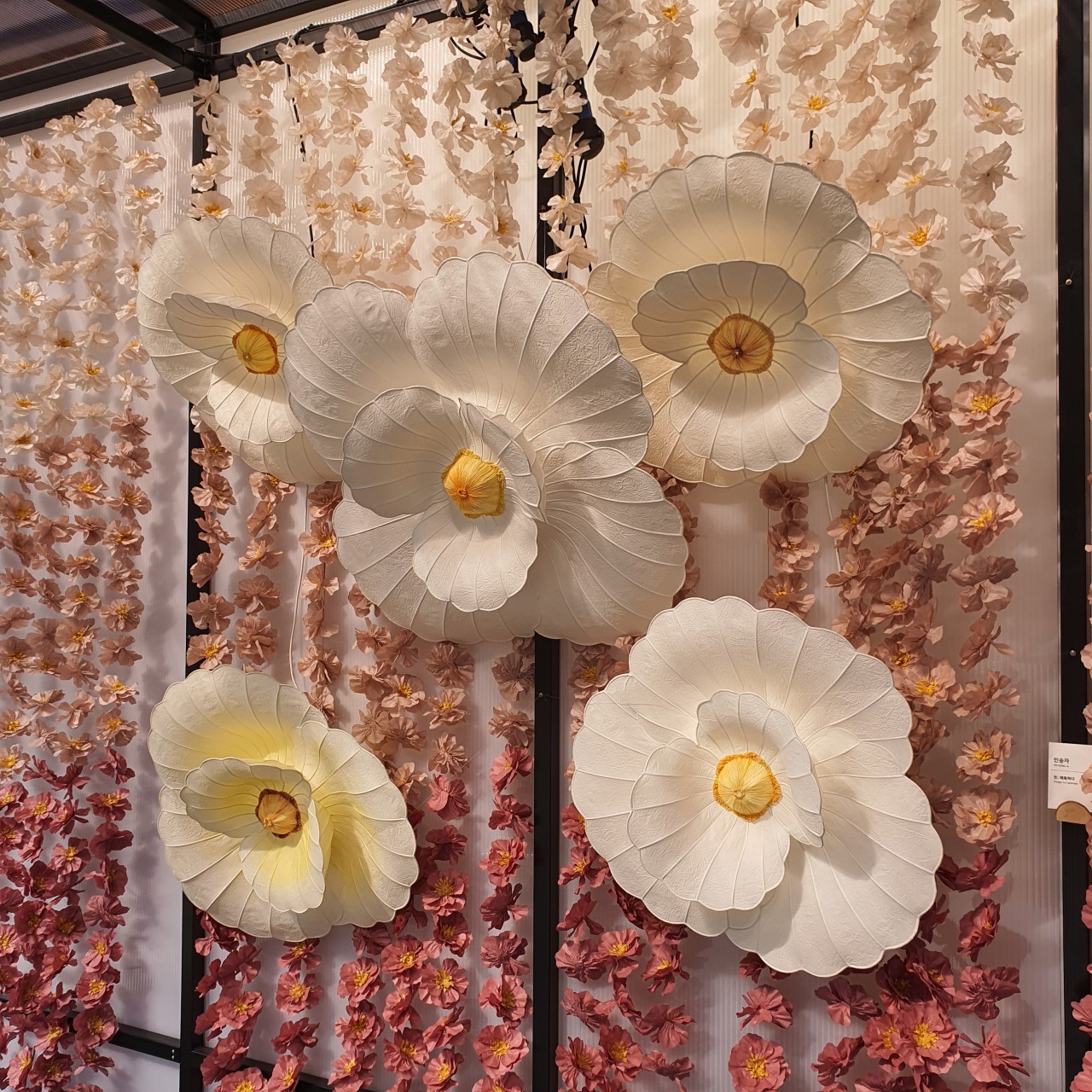
Hanji flowers from Wonju, Gangwon Province, are exhibited near Sujeongjeon, one of the buildings within Gyeongbokgung in Seoul. (Royal Culture Festival)
The first zone, set up next to the palace gate Geunjeongmun, displays naturally dyed fabrics from Naju, South Jeolla Province, which is best known for its natural dyeing tradition and its prized indigo dye. The exhibition begins with strips of vibrant blue fabric hanging from the ceiling. After passing through them, visitors can enjoy paintings and everyday objects such as masks made with natural dyeing techniques.
More than 130 Korean moon jars are on display on the grass near Sujeongjeon. The white porcelain jars were created by ceramic artist Shin Chul, who is based in Icheon, Gyeonggi Province, a city famous for its ceramicware.
“Next to the jars, we placed lanterns made of hanji from Wonju, Gangwon Province,” Yoo said. Hanji is traditional Korean paper, handmade from mulberry wood. “This place looks beautiful, especially at night.”
On the right side of Sujeongjeon, there is a zone dedicated to Jeju Island’s female divers, called “haenyeo.” Haenyeo statues show the divers riding scooters, with their leader wearing the traditional costume of the palace staff. This artwork is part of the “Haenyeo and Scooter” series that artist Kim Hea-sook created especially for this year’s palace festival.
“All of them have different facial expressions,” Yoo said. “It would be interesting to check that out.”
The best photo zone is to the left of Sujeongjeon. The zone is filled with rainbow-colored flowers made of hanji. There are also hanji chandeliers and a tree decorated with hanji ornaments.
Across from Gyeonghoeru Pavilion, a place that drew global attention after a BTS performance, there is a tunnel showcasing 1,500 colorful lanterns made with silk from Jinju, South Gyeongsang Province. This is a popular spot to take photos, day and night.
Sea Art Festival 2021 in Busan 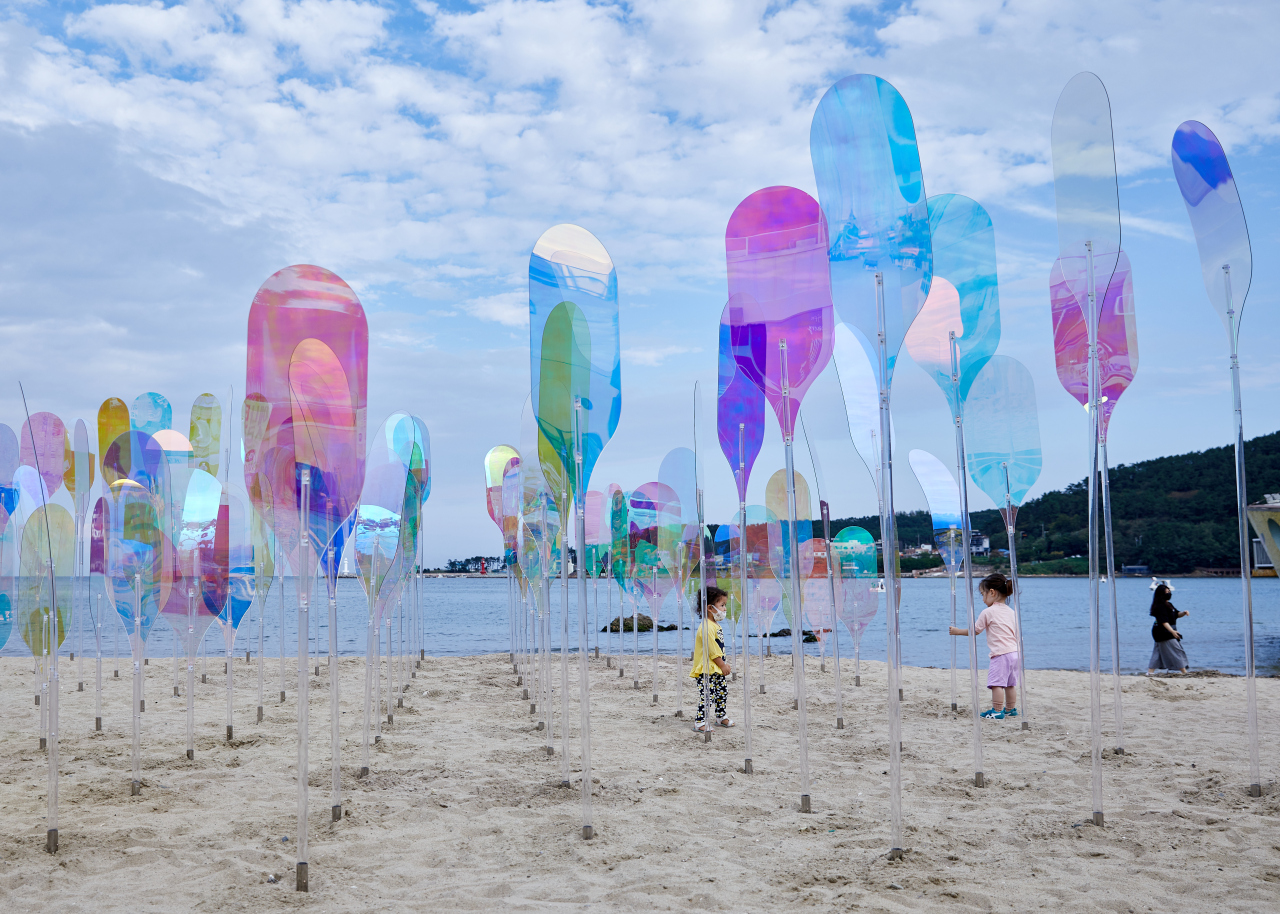
Lightwaves” by OBBA at Sea Art Festival 2021 in Busan
If you want to enjoy the beach before it gets too cold, how about a visit to Ilgwang Beach in Busan? You can appreciate the art on the sandy beach, where Sea Art Festival 2021 kicked off last weekend.
The 30-day art festival offers a relaxing way to enjoy art and the beach at the same time. Installation works by 36 artists and collectives from 13 countries are on display along the beach. Their purpose is to explore the relationships between humans and nonhumans.
Visitors can take out coffee from nearby cafes and walk along the beach, take photographs and enjoy the art and the sea breeze. Works from the exhibition can also be found under a bridge near the beach.
The art festival will run through Nov. 14. Some of the works can be viewed at Busan Biennale’s YouTube channel. These include “Gestate” by Taiwanese artist Kuei-Chin Lee, who communicates with natural elements through his works and explores how to coexist with the surrounding environment.
The biennial event started in 1987 and is directed by curator Ritika Biswas from India this year.
World Bibim Week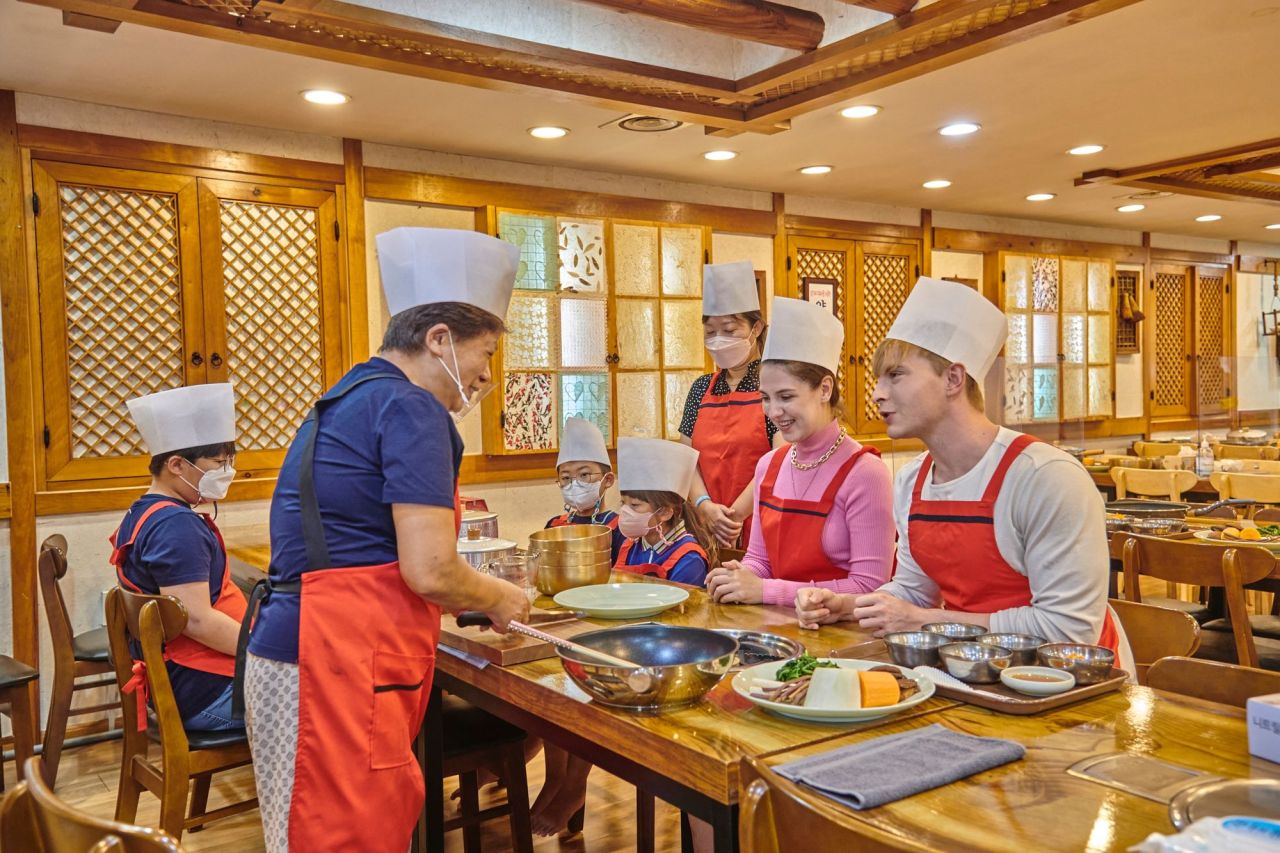
Visitors learn about Korean food during World Bibim Week at Jeonju Hanok Village in Jeonju, North Jeolla Province. (World Bibim Week)
Jeonju, North Jeolla Province, is the place to be this weekend if you love Korean food -- especially bibimbap, rice mixed with assorted toppings.
World Bibim Week, which started in early October, is scheduled to run through Oct. 31 at Jeonju Hanok Village.
The event, formerly the Jeonju Bibimbap Festival, is offering its main activities only on the weekends.
This weekend the theme is “Protein Week,” where the goal is to help visitors taste the widest possible variety of foods. If you are meatatarian, don’t miss it! Chefs will be on hand to offer unique creations.
In addition to tasting the amazing dishes, visitors can learn about the history of Korean food from the masters, and can enjoy a picnic and a small jazz concert at a hanok.
There are classes where you can try your hand at making handicrafts such as pencil cases, stuffed toys and eco-bags. Prices vary.
Even if you are not interested in the cultural programs, you can simply come out to the festival to eat with your friends, parents or children.
Interested in celebrating Halloween in Korea? World Bibim Week is planning a special dance party on Oct. 30 with delicious Halloween-themed foods.
Updated information about the festival is available on World Bibim Week’s official website or its social media accounts.
By Culture Desk
(
ssh@heraldcorp.com)
(
yunapark@heraldcorp.com)
(
sj_lee@heraldcorp.com)










![[KH Explains] How should Korea adjust its trade defenses against Chinese EVs?](http://res.heraldm.com/phpwas/restmb_idxmake.php?idx=645&simg=/content/image/2024/04/15/20240415050562_0.jpg&u=20240415144419)